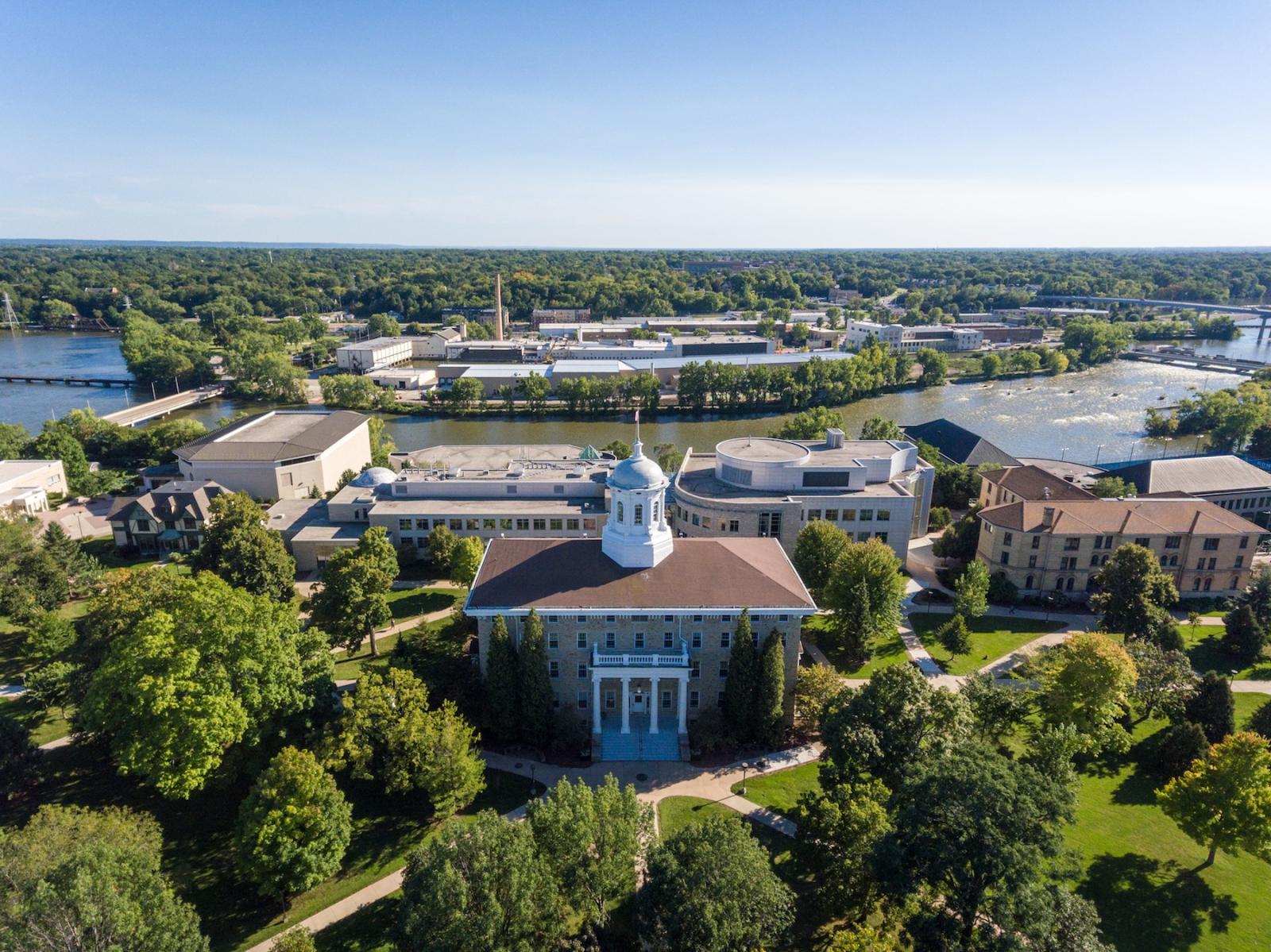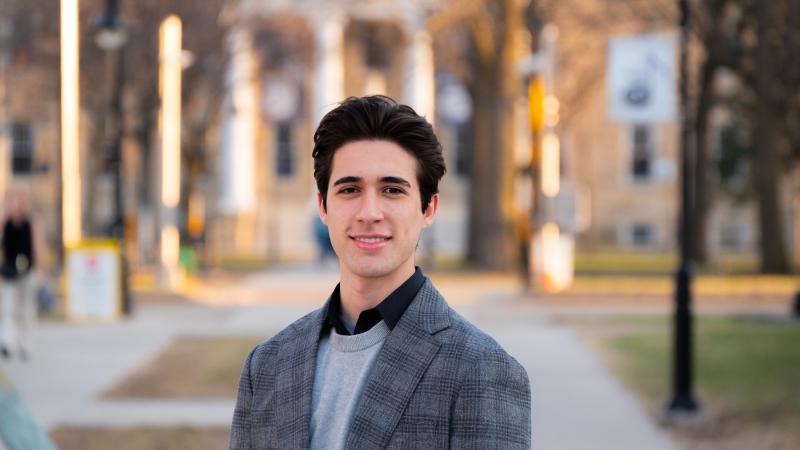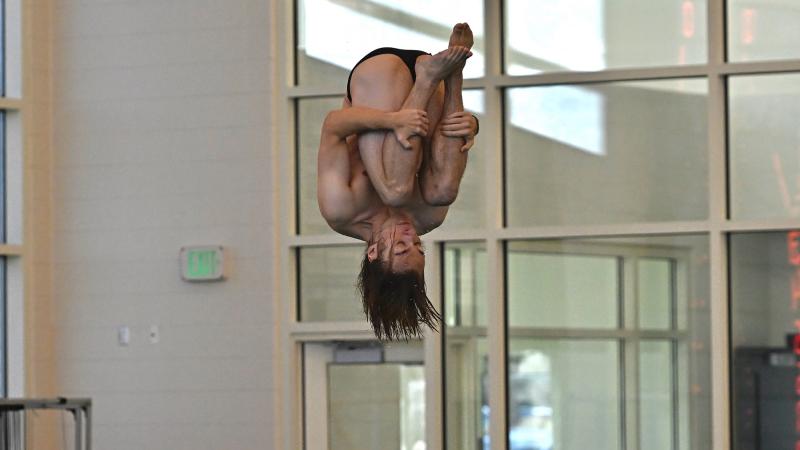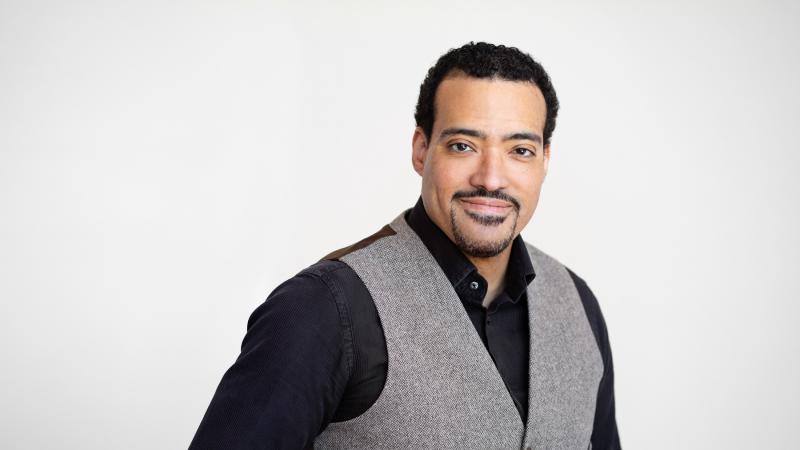Bonnie Laird ’64, a longtime supporter of Lawrence University who was instrumental in numerous successful fundraising and reunion projects, including the formation of the Leveraging Lawrence Faculty Initiatives (LLFI) program, passed away June 13, 2023. Her classmate, Peter Betzer ’64, has written the following tribute, with testimonials from three faculty members whose research has benefited from the LLFI program:
Bonnie Laird ’64 was a dedicated, loyal, and generous Lawrentian who for decades inspired many others to support Lawrence. Almost as soon as we graduated 60 years ago, Bonnie began connecting with our classmates and spent countless hours encouraging them to attend reunions. Prior to our 40th and 50th reunions, Bonnie and I spent hundreds of hours phoning our classmates in hopes they would decide to attend a reunion. In addition, every several days we would discuss our successes and consider ways to convince the undecided to join us. In the months leading up to our 40th reunion (June 2004) Bonnie and I spoke with 222 classmates.

Bonnie Laird '64 is seen front row to the right at the 2004 Reunion.
It was especially meaningful that both our 40th and 50th reunions established substantial new records for: 1) donations to the Lawrence Fund; 2) for % participation; and 3) for the number of Legacy Circle members. Particularly striking for our 40th reunion was tripling the all-time record for contributions to the Lawrence Fund ($232,000 vs $757,729). We were also proud of our participation rate, 82.8%, which was considerably more than the previous mark of 72%. Only six classes have ever had more than a 70% participation rate. These distinctive accomplishments are a tribute to our dedicated classmate, Bonnie R. Laird.
Amazingly, Bonnie’s impact extended well beyond making sure the Class of ’64 established new records. Bonnie not only helped plan the activities and special celebrations at our 25th, 40th and 50th reunions but also made sure there were plenty of snacks and drinks for our classmates to enjoy. Another classmate I spoke with about Bonnie’s active involvement with our class reunions stated: “SHE DID IT ALL”. Suffice it to say Bonnie Laird made the reunions especially memorable; not just for her classmates but also for her beloved Lawrence.
In addition, Bonnie was part of a small group of classmates that in 2013 began planning our 50th Reunion in 2014. During those discussions, a new program – Leveraging Lawrence Faculty Initiatives – was advanced. At that time, any awards the faculty or institution received – federal, state, foundation – that required matching funds meant Lawrence was forced to reduce that amount from their departmental budgets. It has always been a challenge for Lawrence to adequately support their faculty and staff, maintain physical facilities, conduct lecture series, and to continue athletic programs. As a result, any new grant requiring a match would become a cause for celebration in one area and a financial scramble in another. The goal of our initiative was to build an endowment sufficient to cover the matching funds required as part of any new grant that a faculty member or Lawrence University was awarded. Not surprisingly, several classmates were skeptical that our class could create a large enough endowment to make a substantive difference. Indeed the “realists” maintained the class of ’64 would never raise more than $100,000! Thankfully, Gene Clark, Robert Anker, and Bonnie Laird were most supportive and a new endowment, Leveraging Lawrence Faculty Initiatives, was started as an integral part of our 50th reunion. Thankfully, 43 classmates have donated to a fund that is now in excess of $900,000.
The first awards from the endowment were made in June 2014 to three faculty (Adam Galambos, Dave Hall, and Martyn Smith). In the past 10 years, 23 faculty have received awards that supported them and their research but also enriched Lawrence’s academic programs. Not surprisingly a number of high-profile publications have been produced including one by Dr. Jodi Sedlock (biology) that was featured on the cover of FUNCTIONAL ECOLOGY, whose research was supported by a grant from the National Science Foundation. Jodi stated, “The initial funding from Leveraging Lawrence Faculty Initiatives continues to bear fruit for Lawrence students and me”. In addition, thanks to Dr. Allison Fleshman, Lawrence’s chemistry program has been highlighted at Oak Ridge National Laboratory and her students are being accepted at the top graduate chemistry programs – Berkeley, Wisconsin, Michigan, and Colorado. Dr. Doug Martin and his physics students have also benefited substantially from the multiple grant awards that have been supported by the Leveraging Lawrence Initiatives Endowment. More complete summaries of the impressive impact this fund has provided Drs. Sedlock, Fleshman, Martin and their students are available below.
In 2023, the Leveraging Lawrence Faculty Initiatives program was named for a major donor, Robert Anker ’64, who from our first discussions (September 2013) made it clear he felt this would be a transformative endeavor—Robert Anker Fund for Leveraging Faculty Initiatives.
Bonnie Laird’s support of Lawrence encompasses more than record-breaking reunions and multi decadal efforts that inspired her classmates to support Lawrence. Bonnie’s bequests to Lawrence include the Bonnie R. Laird and Dorothy Brenner Laird Scholarship, the Bonnie R. Laird endowment for Bjorkluden and a major contribution to the Robert Anker Fund for Leveraging Faculty Initiatives. For 59 years our classmate not only dedicated herself to supporting Lawrence but also left bequests that will continue enhancing Lawrence for decades. If Lawrence ever decided to establish a group of Viking “ALL STARS” I have little doubt Bonnie Laird would be a charter member of Lawrence’s first class.
Faculty testimonials:
Jodie Sedlock, professor of biology:
I was a beneficiary of the Leveraging Faculty Initiatives fund in 2017, which supported my novel work investigating the effects of insect ultrasound on bat behavior. The grant allowed my collaborator at Boise State and me to build an array of 100 ultrasonic speakers—a “phantom insect chorus”—to experimentally test our hypothesis that phenomenally loud katydid (insect) choruses were degrading bat foraging habitat and reduced their service as consumers of crop pests. The National Science Foundation was not initially willing to fund the ultrasonic speaker array (too risky), but when we resubmitted our request with LFI funding for the array, they funded our supplemental grant request. This work was featured on the cover of Functional Ecology.

Jodie Sedlock's research was featured on the cover of Functional Ecology.
Working with Dr. Jesse Barber, a well-known acoustic ecologist at Boise State, afforded me a wealth of skills and experiences that I have passed along to my research students at Lawrence. We continue to use the speaker array to test hypotheses regarding the effects of ultrasonic katydid choruses on hearing moths, especially crop pests such as the fall armyworm. Lawrence students and I are collaborating with scientists at the USDA in Gainesville, Florida, and at the National Crop Institute in Tokyo, Japan—work that I will present at the International Congress of Entomology in Kyoto, Japan in August. The initial LFI funding continues to bear fruit for Lawrence students and for me.
Doug Martin, associate professor of physics:
I received support from the LFI fund in the form of matching funds for three successful grant proposals to the Wisconsin Space Grant Consortium (WSGC). These NASA-funded proposals required a 1:1 Lawrence match; hence the use of LFI funds. These three proposals, covering 2022 to 2024, all revolved around designing and building an open source microscope. The goal? A microscope capable of research-grade multi-color fluorescence imaging and brightfield or darkfield imaging that users can take apart and re-assemble. Thus, students not only learn how to use microscopes but how to re-design them for new experiments.
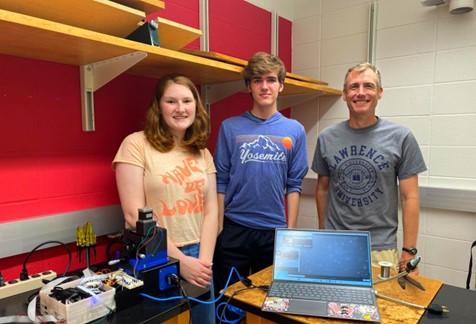
Doug Martin (right) works on research with students Grace Weber ’24 and Joseph Carpenter ’25.
This has been incredibly successful at reanimating my own research program from its COVID-era torpor. The results:
- Two copies of the open source microscope at Lawrence, one in use in the physics department for research and Advanced Laboratory (PHYS 330), and a second in use in biochemistry for research.
- Two presentations at national meetings (American Society for Biochemistry and Molecular Biology, March 2024, and the American Association of Physics Teachers BFY IV conference, July 2023), and two student presentations at the Wisconsin Space conference in 2022 and 2023.
- Eight LU students directly or indirectly supported for summer research. Three have graduated and are: (1) in a Ph.D. program for biochemistry at UW-Madison; (2) in a Ph.D. program for physics at George Washington University; (3) in a MS for engineering program at Washington University in St Louis. Two are graduating in June 2024, one going to a MS in medical physics at the University of Minnesota and one doing an AmeriCorps service project in Milwaukee.
- One NSF grant submitted (3 years, $264k) in January 2024. Goal: do live cell biochemistry and biophysics at Lawrence. Funding TBA.
- One “immersions” project where four PIs will come to Lawrence in July 2024 to learn to build their own versions of this open source microscope.
Allison Fleshman, associate professor of chemistry:
My students and I investigate materials that could make batteries work more efficiently and last longer. Doing research with students is a particularly rewarding part of working at Lawrence where I get to see them thrive as young scientists. Indeed, the opportunities Lawrence provides are particularly meaningful. A generous gift that has had a huge impact on my research and student research is the Leveraging Faculty Initiatives Fund, which funds the purchase of equipment that are part of research grants. In my battery work, the outdated instrumentation in my laboratory was so slow that it ruled out research for me and for my students. A compact and automated instrument became available but was too expensive for a grant I was eligible to acquire. Thankfully, the Leveraging Faculty Initiatives Fund leveraged the difference and subsequently I was awarded a grant from the Pittsburgh Conference Memorial National College Grant.
A number of my faculty colleagues and their students have also benefited because Lawrence has a group of alumni, with Bonnie Laird being a key player, who believed that small investments in Lawrence faculty can have a huge impact! With the new Biologic conductivity meter, my students went from taking 12 hours for a single sample measurement to measuring 10 samples in only four hours—30 times faster! My students who have benefited from this instrument went on to graduate work at the University of Montana, Duke, and the Colorado School of Mines. In addition, a grant from the Department of Energy to work at Oak Ridge National Laboratory allowed a student and me to use our conductivity meter to pursue research on novel materials. That student, Nicolette Puskar, is currently in the Ph.D. program at UC-Berkeley after being invited to Oak Ridge for a post-bac position. The opportunities for Lawrence students to work directly with scientific equipment is crucial to their growth as scientists. I am grateful to the class of ’64 for this gracious gift that helps Lawrence faculty and their students engage in scientific research. The publication of work co-authored with Professor Nicholas Mauro ’05, was conducted using the instrumentation supported by the Leveraging Faculty Initiatives Fund. It’s rewarding to see where the careers of Lawrence students go and to reflect on the important people who made a key difference in their journey.
